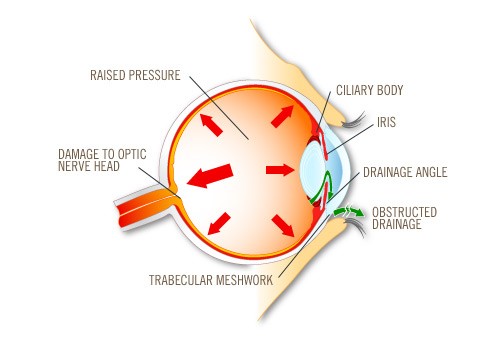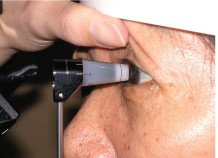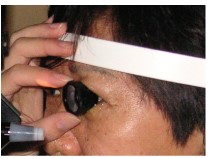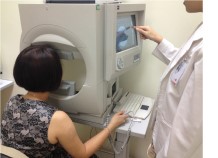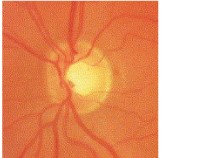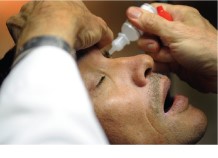Glaucoma can be classified into primary (not associated with other eye diseases) and secondary (as a result of pre-existing eye diseases). These are subdivided into open- angles and closed- angles glaucoma.
Primary Open-Angle Glaucoma
The most common type of glaucoma. Its symptoms are usually gradual and you may not notice any vision loss until the advanced stages.
Primary Angle-Closure Glaucoma maybe be acute or chronic.
Acute Primary Angle-Closure Glaucoma
- Occurs more commonly in the middle-aged or elderly Chinese females especially those who are long-sighted.
- Characterised by a sudden increase in the eyeball pressure, causing sudden onset of pain, redness and blurred vision in one or both eyes. There may be headache, nausea and vomiting as well.
- Urgent treatment to lower the pressure is essential to save vision.
Chronic Primary Angle-closure Glaucoma
- Vision loss is progressive with side vision usually being affected first.
- The disease is often very advanced before visual loss is noted, that is why this disease is often called the “silent thief of vision".
In both forms of glaucoma, laser treatment (peripheral iridotomy), along with anti-glaucoma eye drops may be needed.
Secondary glaucoma occurs when other eye diseases cause an increase in eye pressure, leading to optic nerve damage. This can be related to other medical conditions such as diabetes mellitus, or can happen following injury to the eye.
One can also be born with glaucoma, in the case of congenital glaucoma.
Normal Tension Glaucoma
In normal-tension glaucoma, susceptible individuals develop optic nerve damage even when their eye pressures are within normal limits.
Risk factors for the development of normal-tension glaucoma include:
- Family history of glaucoma
- History of major blood loss or blood transfusion
- History of migraine
- History of Raynaud's phenomenon- spasm of blood vessels leading to discolouration of fingers and toes.
Treatment with anti-glaucoma eye drops is first line for this condition.

